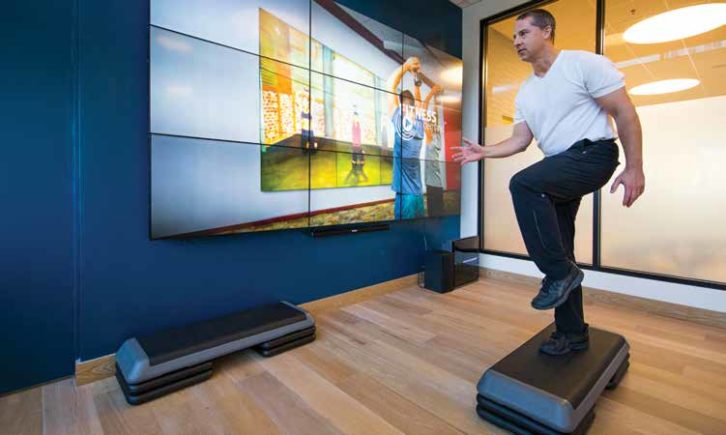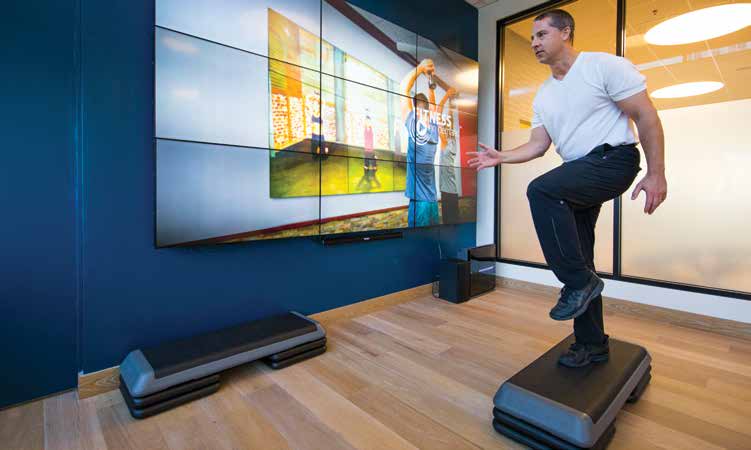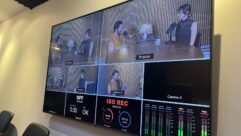

The Earth keeps spinning. So does the world of video wall technology, in which constant evolution and technical advancements are making it more affordable for almost any entity to employ.
“As the manufacturing costs of LCD and LED materials lower, end users are able to procure what they once thought was out of their reach,” said Keith Taylor, senior vice president, Unified AV Systems. “Even the signal processors are becoming more mainstream.”
From pixels to display size, to content and media players, what’s being sold this year could be leaps and bounds ahead of 2016, and integrators are tasked with keeping up with the changing needs and sources.
“As integrators struggle to keep up with the ever-changing client desires, they find trade shows, conferences, online blogs, SCN, peer groups, and technology associations provide the information they need to be on the forefront of cutting-edge video wall technology advancements,” Taylor said.
This is simply a matter of time and effort on the part of the engineering staff to keep up with changes in technology as they occur, according to Jim Colquhoun, chief technologist, Avidex. “While we may not catch everything, with regular research, we catch trends and changes in direction or technology,” he said. “Our engineering teams meet regularly to compare notes so that we are aware of the research and share appropriately. We also connect the design engineering staff with the field engineering and service engineering staffs to make sure that we have a complete picture.”
When it comes to changes in display technologies, he added, “what we are seeing is that as the costs drop and as the resolution improves—as in reduced pitch of direct-view LED displays, or the gap between displays when using LCDs as a tiled array—we are applying the display technologies in places that either budget or resolution prevented previously. We are also using more displays than projectors these days, but with more capable software management of edge-blending, projectors still have a significant role in large display solutions.”
There is now more focus on cloud-based content for video walls that make remote layout, management, and material scheduling more flexible from the client perspective, said Michael Dannenberg, director of new and emerging technologies and associate principal, Vantage Technology Consulting Group. “For basic video walls, as well as for more complex walls, local processing hardware can pull from a variety of stored or cloud/web materials, open content such as RSS feeds, existing campus signage information, and branding, etc., as well as specialized artistic and branding content designed by an engaged content creation firm for the direct application,” he said. “Similar to cloud-based content creation and editing software for digital signage solutions, timing for various content can be set, as well as what materials are to be played on the larger scale. Localized content management, processing, and storage are still important, and can still provide remote content management based on assignable network rights for content editing and management.”
With so much flexibility available in creating a digital canvas that allows content to be mapped or structured onto various display mediums within the pixel map, newer, smaller dot-pitch LED technologies can be wrapped around curved contours and lend themselves to expanded creativity to architects and designers, he added. “Finer dot-pitch standard modular LED tiles permit closer display arrays to the viewers. Newer video wall tiles or OLED displays, such as those shown at CES this past January, can also provide a unique display impression.”
Dannenberg noted that he still employs concepts shown at CES and InfoComm 2015 and 2016 for the transparent OLED displays to yield some interesting layered content results. “For support, you may have a large central main display wall with multiple, separate lone displays, mapped projection, LED elements and/or additional video wall segments allowing for a deconstructed look while still maintaining video content continuity across and between all visual elements within the system. The ‘black’ spaces in between become part of the content as well.”
MISSION TO TRAIN AND EDUCATE
Helping clients maximize their video wall investments should be inclusive. “Technology is rapidly progressing, and including the client in video wall technology educational webinars, seminars, trade shows, and NDA room meetings with manufacturers helps build a trusted partnership,” Unified AV Systems’ Taylor said, “making the client feel educated, empowered, and more confident in the decision-making process.”

At Avidex, education and training are separate parts of the process, Colquhoun said. “In education, the initial exposure to a new technology often occurs during the programmatic phase of a project. As the need is identified for an application or product, we provide our best insights into the options early in a project. This will include a comparative evaluation with the client as to the stability of new technologies, the client budget, and the appropriateness of the technology to the client application and need.” This approach gives the client the opportunity to evaluate needs and technology options with Avidex to be certain that the results will fit the requirements, he added. “Budget impact and risk are always a part of the discussion with the client. They need to make informed decisions, so they need all of the information we can provide. In some cases, this includes demonstrations or field trips to other locations that implemented a solution similar to what is being considered.”
Training can start before the installation of the system that includes the new technology. “This is critical if the newer technology is software based,” Colquhoun noted. “Because so much of what we do is software based, we need to demonstrate and train on the software when, or before, the system is installed. Of course, there is the traditional training at the end of the project, but it is often enhanced by adding time to cover the new technologies. This enhanced training may come from the vendor, from Avidex, or both. As important as the training are the leave-behind materials. In today’s world, everything needs to be documented from the beginning.”
CONSULT THE CONSULTANT
Using a consultant to help look at the video wall project holistically with a client, to analyze the true cost of ownership and the return on investment, and to best strategize on what the client wants out of the project, can be helpful, Dannenberg said. “Consultants can help establish the design parameters for architectural integration by working out the specific design details critical to ensuring a good marriage of aesthetics with the technology as well as the budget,” he said. “Many people forget the cost of a good content developer and post-implementation support while focusing more on the initial capital cost for the equipment and installation.”
These parameters might include the display mediums, physical size, initial structural design concepts, and determining if there are audio or any interactive components associated with the experience and how this is integrated into the physical space with other systems, such as lighting or curtain-wall shades to help enhance or control the environment, he added. “Once the vision is established, corralling and coordinating with the various vendors such as the display manufacturer, structural mount supplier, video processing vendor, and the digital content creator or artist become the critical parts for the successful integration of the display solution,” Dannenberg continued. “The consultant may be involved in assisting in the development of content parameters to help the client engage a content artist looking at various proposals for design rendering and storylines.”
The final elements, Dannenberg said, are to ensure that there is an understanding on how and who will support the wall for maintenance and changes to content, and maintain the content to keep the materials fresh and exciting for maximum impact and viewing. “Quite frequently, a new staff member is brought onto the team to help look at content continuity across the facility to help ensure visual display information is displayed properly in concert with digital signage or other client branding changes,” he concluded. “The designated content management stakeholder would be trained and continue to be educated on advances in what can be displayed or new media that can be pulled in to help keep a fresh look to the displayed materials.”
Karen Mitchell is a freelance writer based in Boulder, CO.










